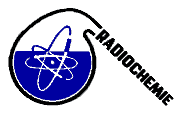Speaker
Mrs
Věra Jedináková-Křížová
(Institute of Chemical Technology)
Description
The contribution is focused on geotechnical, chemical, geochemical and mineralogical research of bentonite stability with the aim to determine the effect of saturation medium composition and loading by heat on bentonite stability. The main part the research is directed to the experimental results of bentonite and bentonite leachate samples obtained for the bentonite interaction under laboratory or in situ experiments.
The markedly different values of Na+, K+, Ca2+, Mg2+ and SO42- ion concentrations are caused by the mineralogical transformation and interaction of the original bentonite material with synthetic granitic water.
Bentonite is included in buffer and backfill materials in most high-level waste repository concepts. Its low hydraulic conductivity, micro-porous structure, good sorption properties and plasticity make this material an effective barrier – protecting the canister and restricting the movement of radionuclides released from the waste packages after canister failure.
The effect of the variable aqueous phase composition on bentonite stability using Ca-Mg and Na-Ca bentonites for the experiments was studied. The synthetic granitic waters with the higher concentration of the K+ and Mg2+ cations were applied for the study of bentonite stability. These investigation were carried out for the 12 months under the laboratory and temperature increase conditions (95 - 100°C). The mineralogical transformation and characterization of the solid phase by RTG diffraction, infrared spectroscopy and cation exchange capacity measurement were evaluated after the termination of these experiments. These mixtures were simultaneously applied for the sorption study of the selected radionuclides (134Cs, 125I and 99TcO4-) with the aim to evaluate the changes of sorption behaviour as the result of bentonite with synthetic granitic water interaction.
The geochemical software tool Geochemist’s Workbench calculated the simple thermodynamic model of bentonite transformation during bentonite with synthetic waters interaction. It was confirmed that smectites are transformed to more stable silicates phases, such as illite/smectite mixed layers, illite. The kinetics of the smectite to illite reactions strongly depends on temperature, time and K+ porewater concentrations.
Radionuclides of 99Tc and 129I may exist in the various oxidation states in the dependence of the redox conditions of the aqueous environment. Technetium exists in oxidation states from +7 to -1. In natural environments, the most stable oxidation states of technetium are +7 and +4 under oxidizing and reducing conditions, respectively. The -1, +5, and molecular I2 [I20(aq)] oxidation states are those most relevant for iodine in environmental systems. Iodine usually exists in fresh water in the -1 oxidation state as iodide (I-), in alkaline and marine environments, iodine usually exists in the +5 oxidation state as iodate (IO3-).
Primary author
Mrs
Věra Jedináková-Křížová
(Institute of Chemical Technology)
Co-authors
Mr
Eduard Hanslík
(T.G.Masaryk Water Research Institute)
Mrs
Hana Vinšová
(Institute of Chemical Technology)

